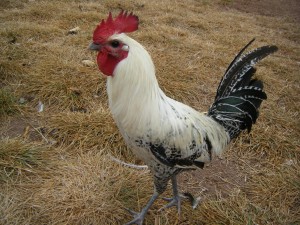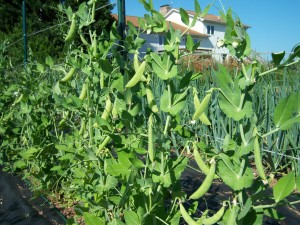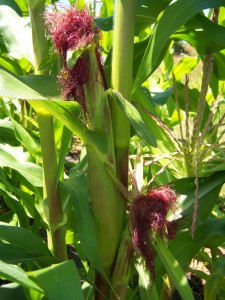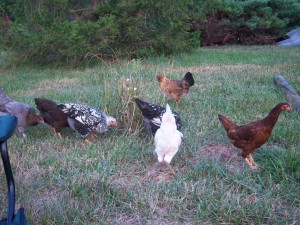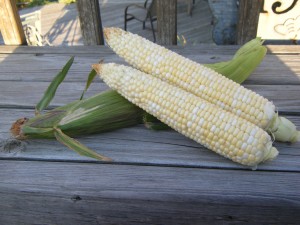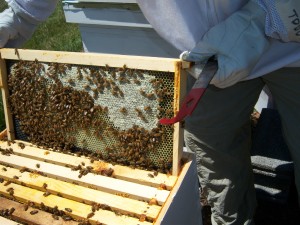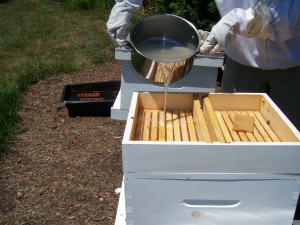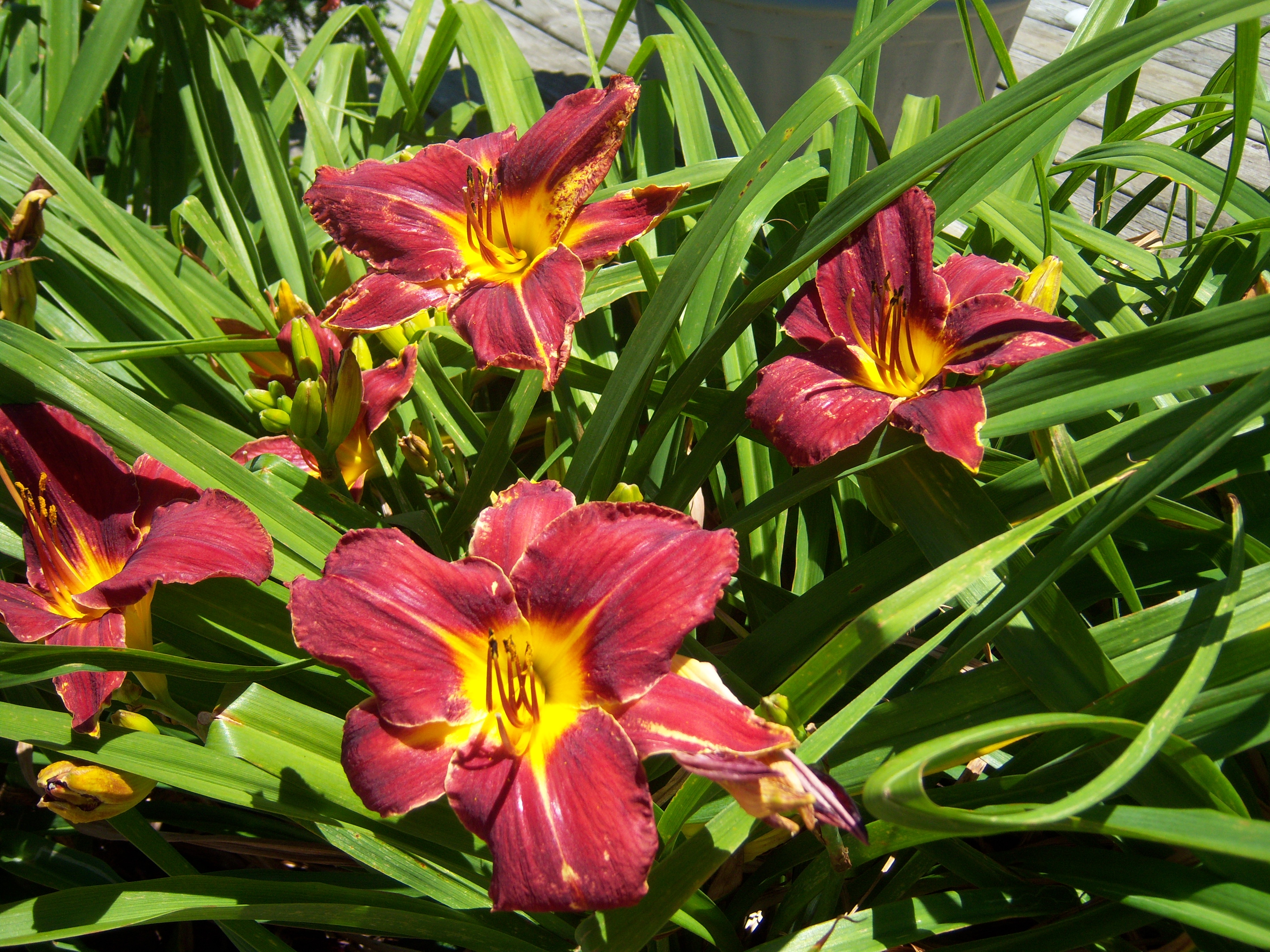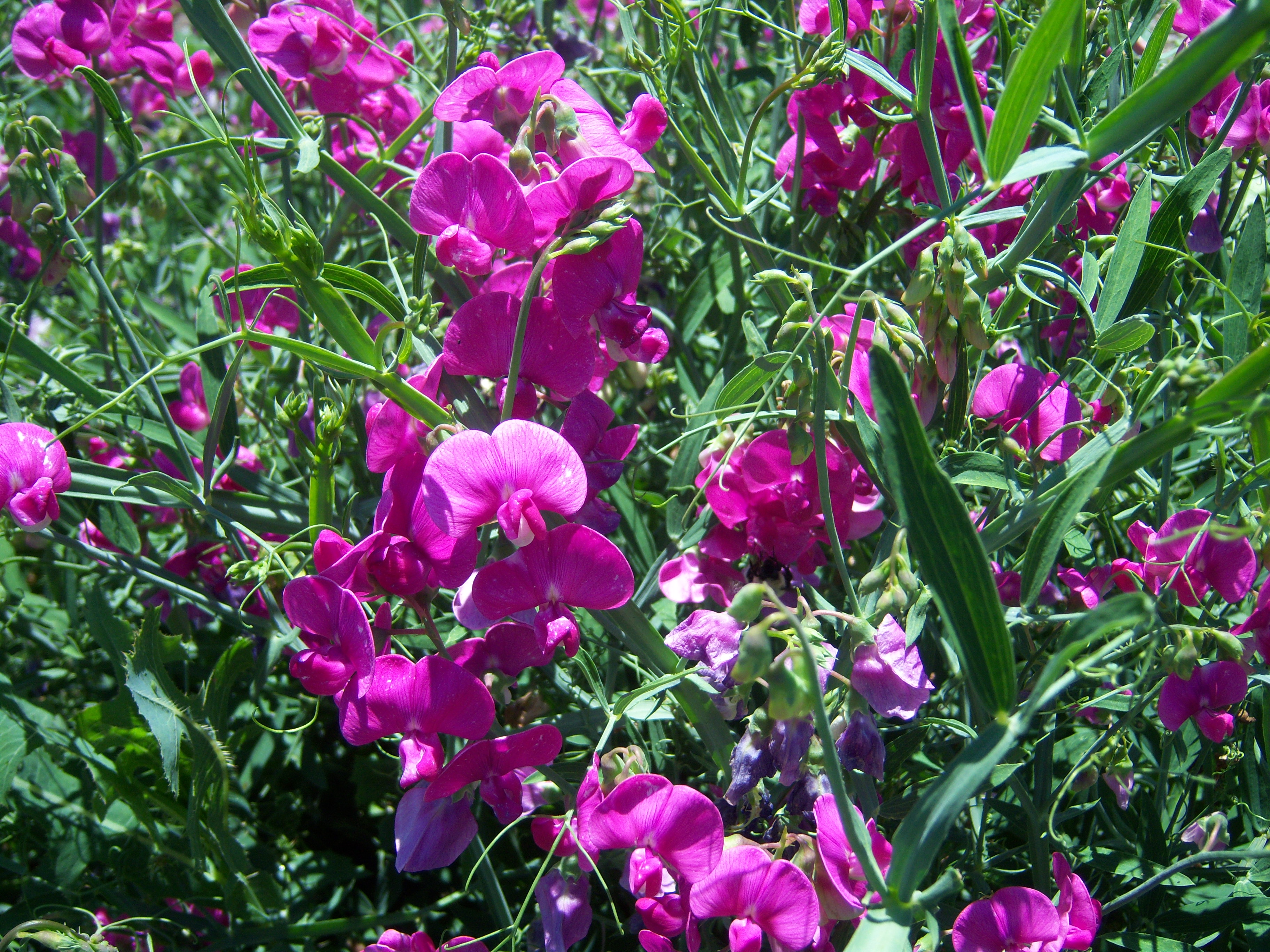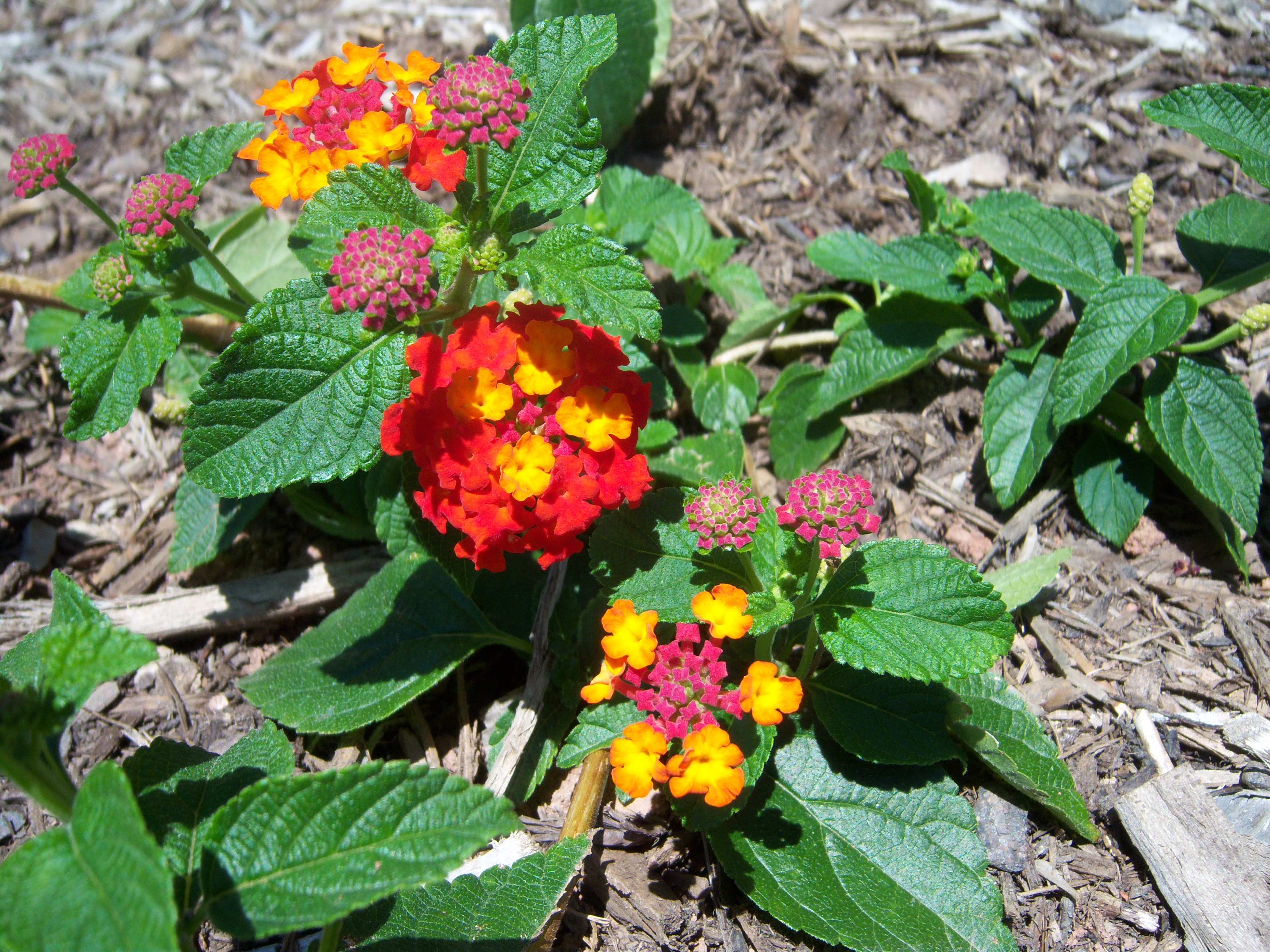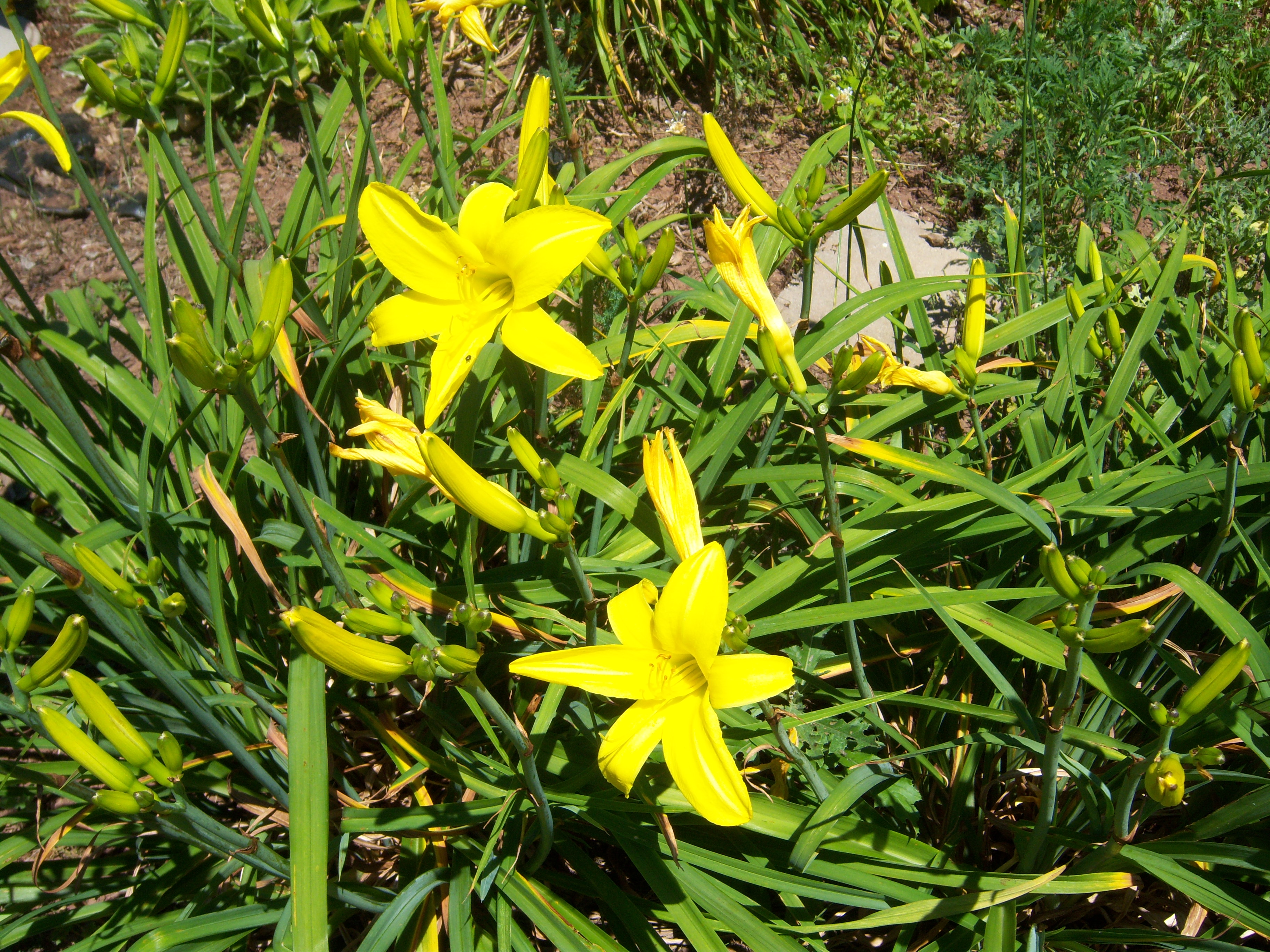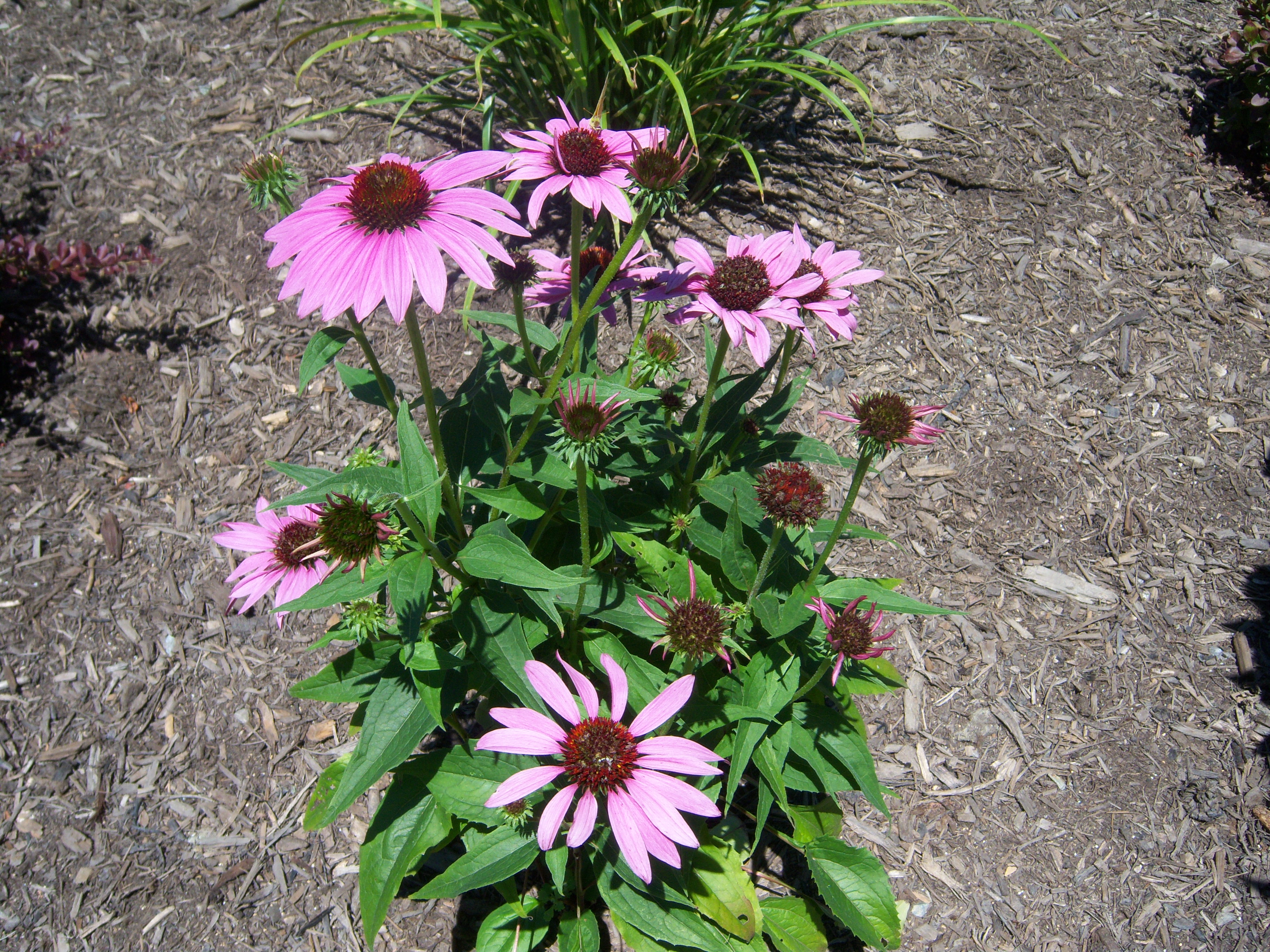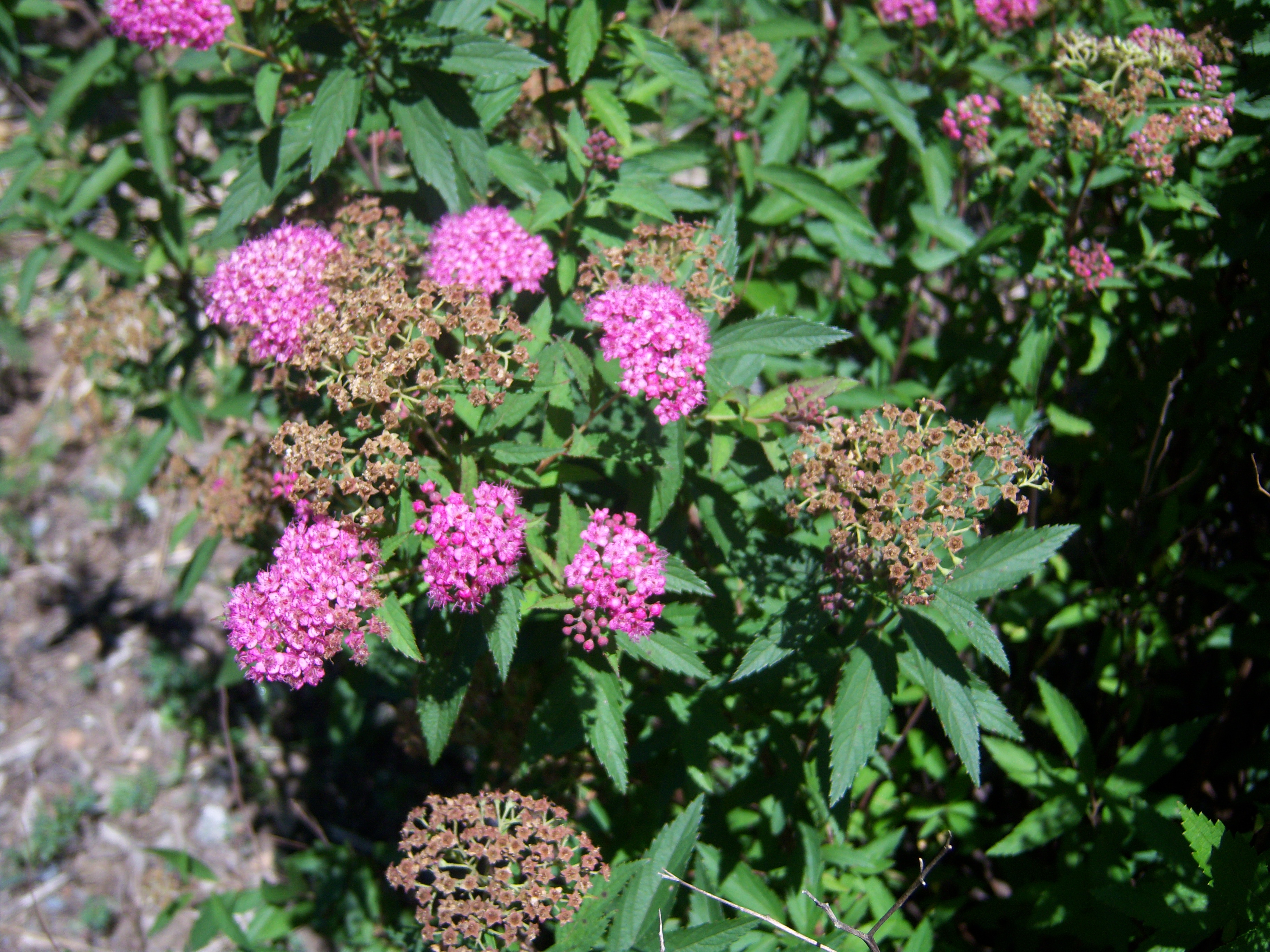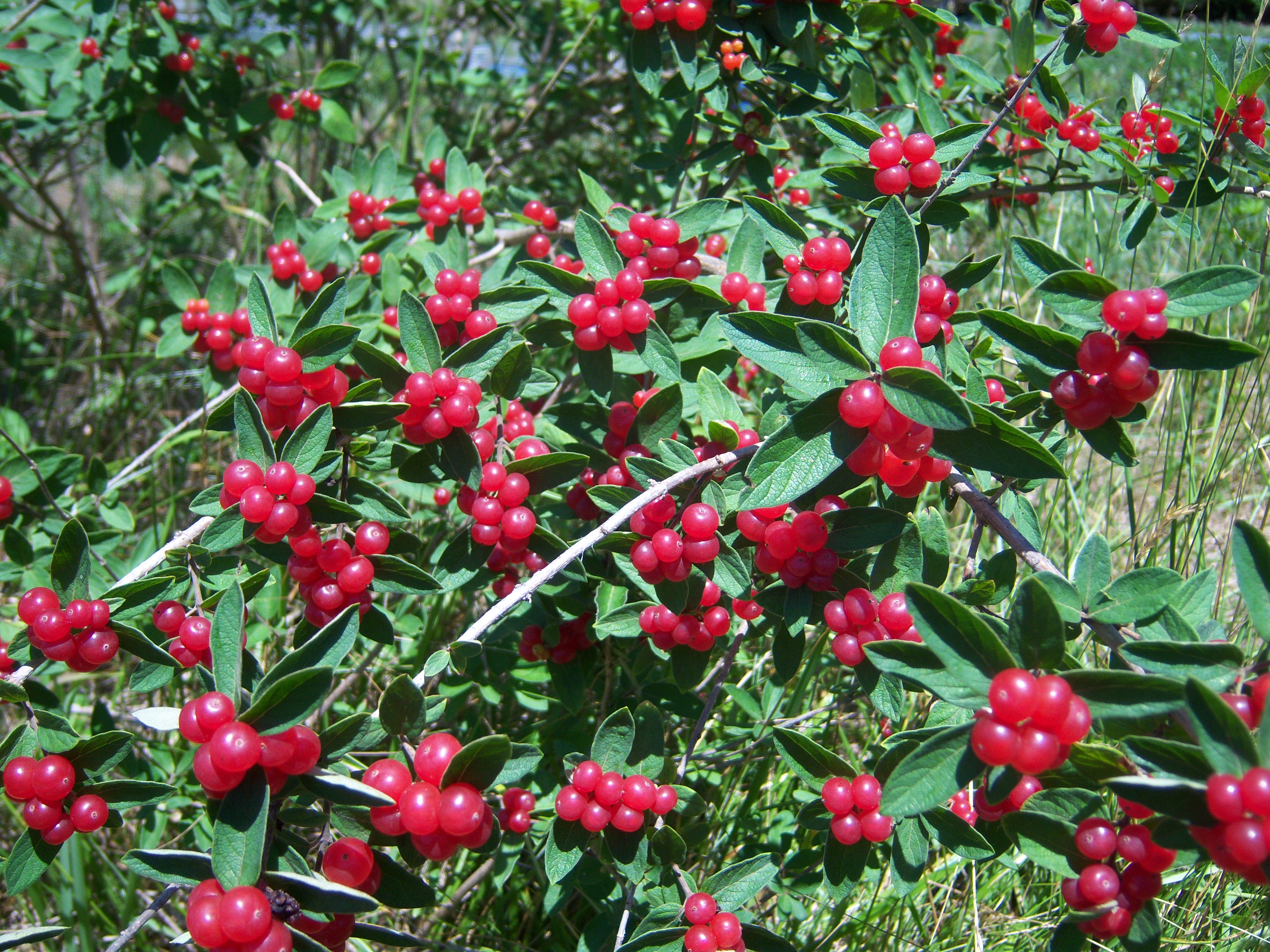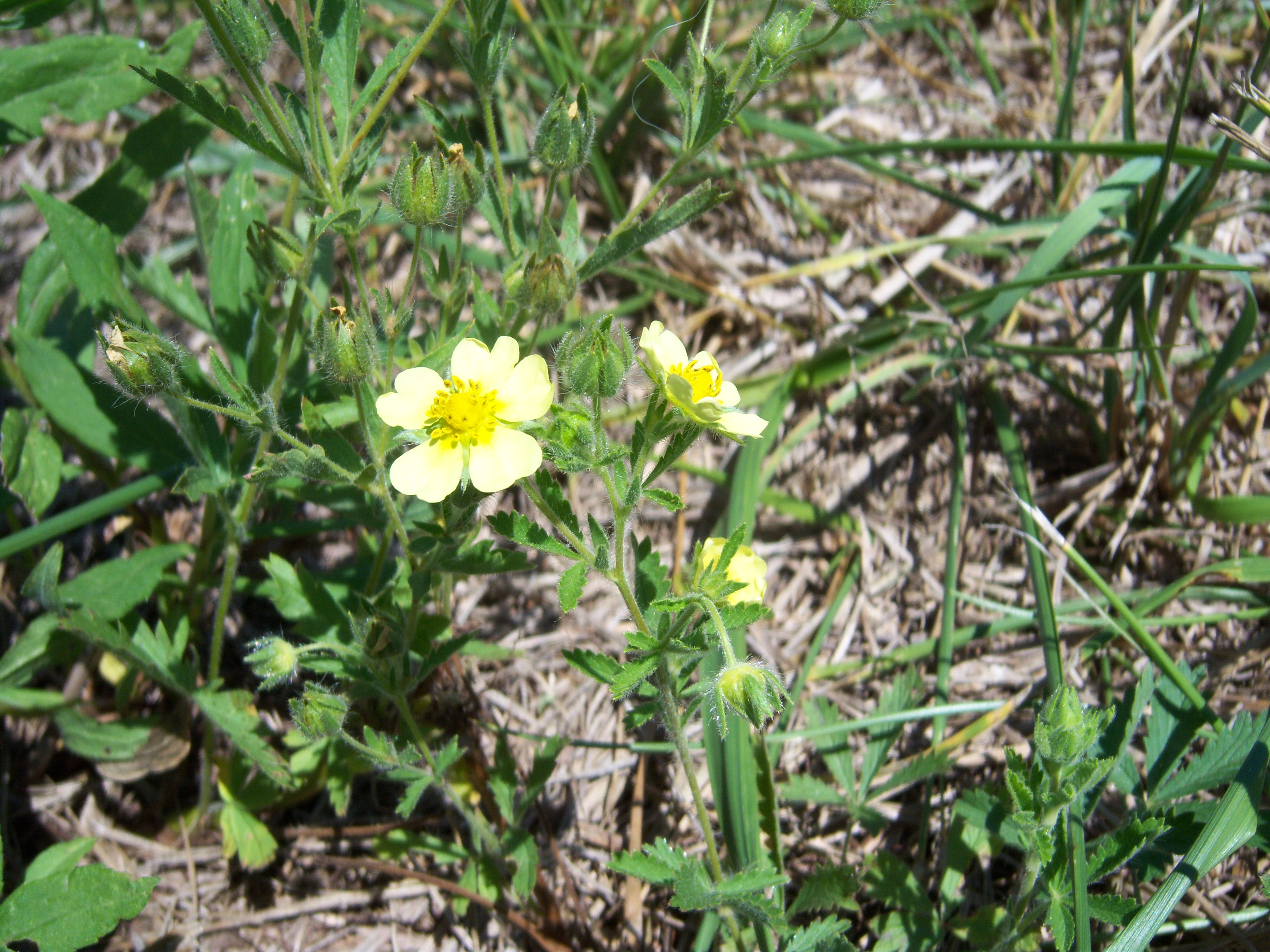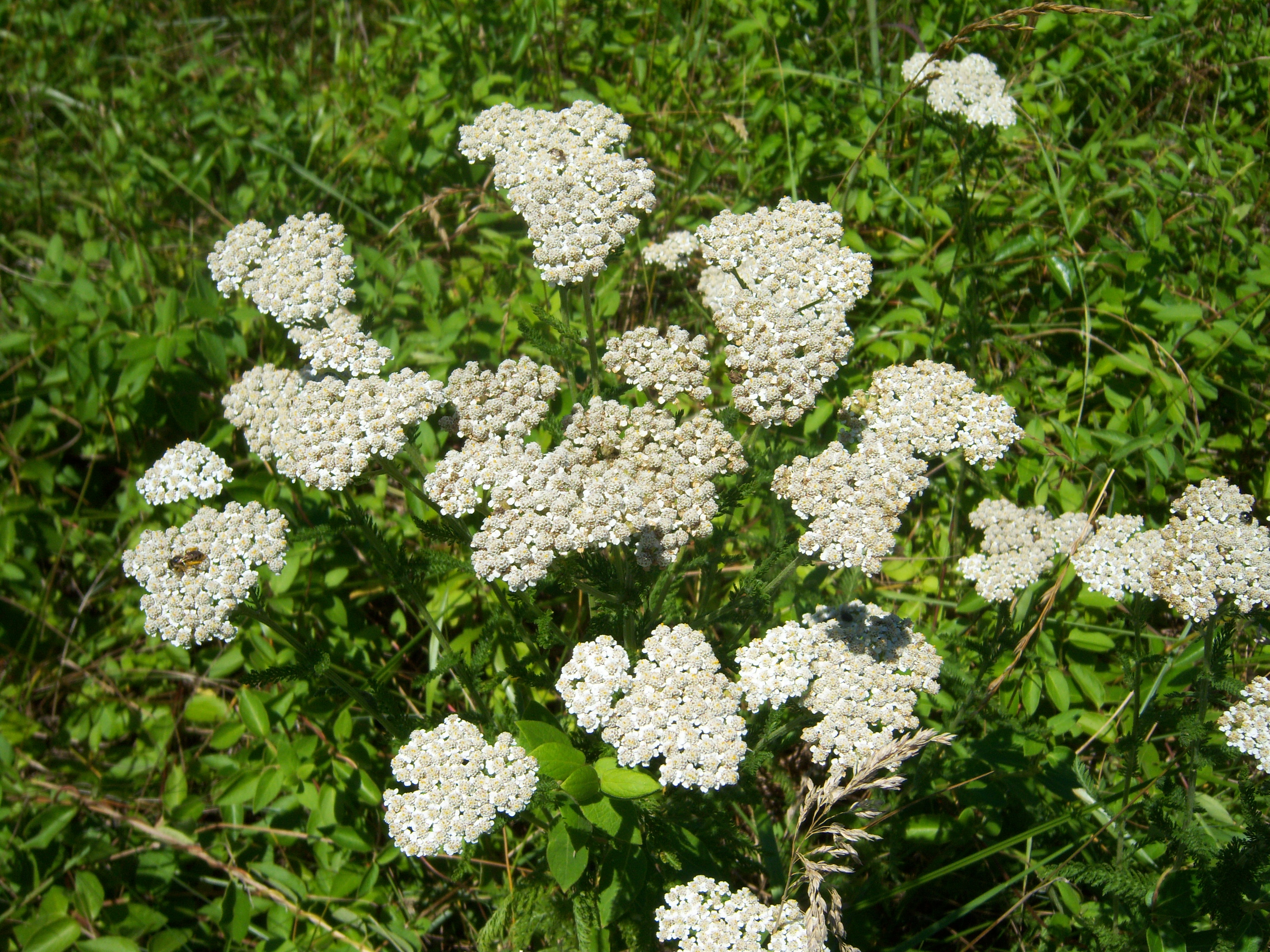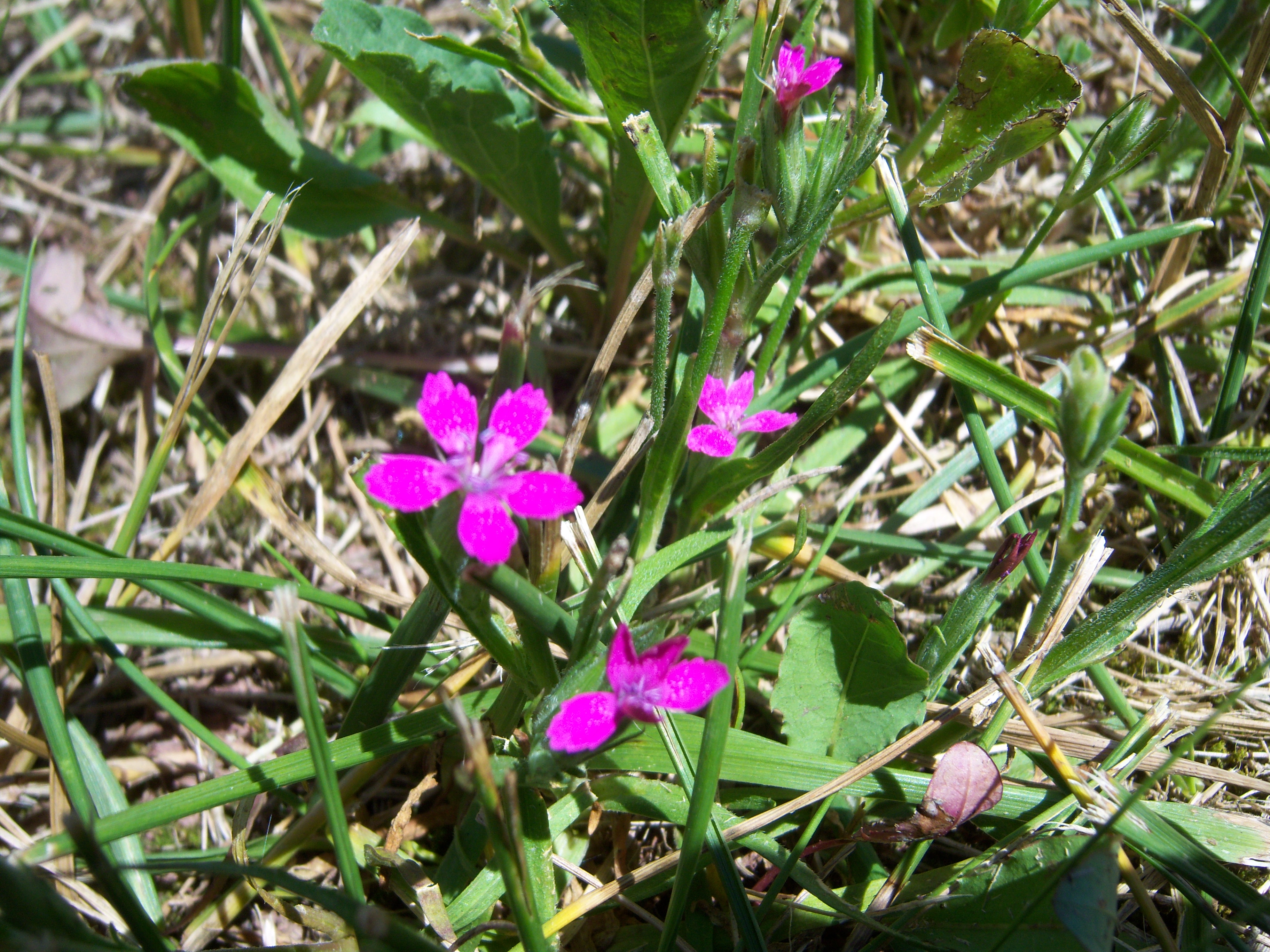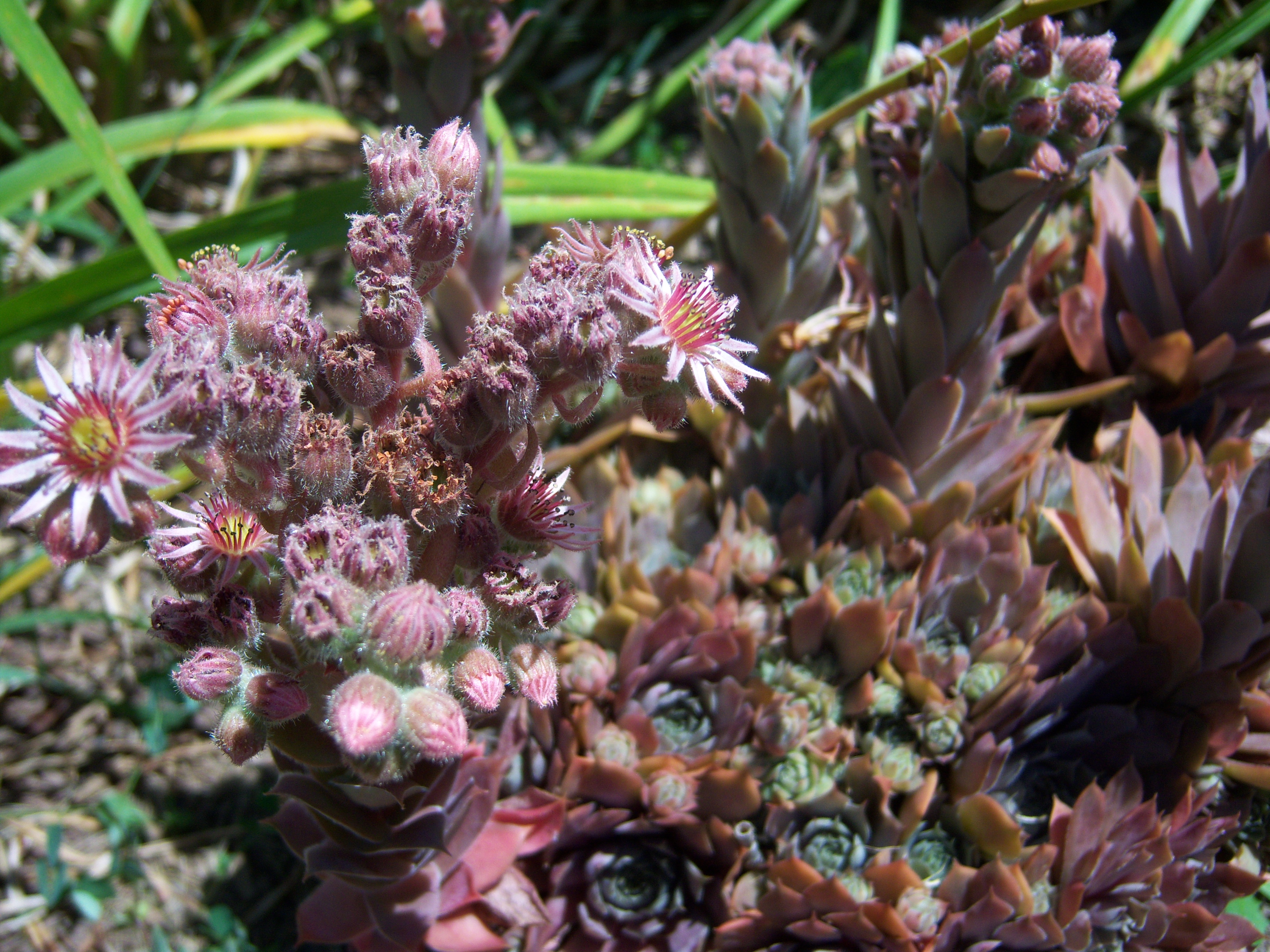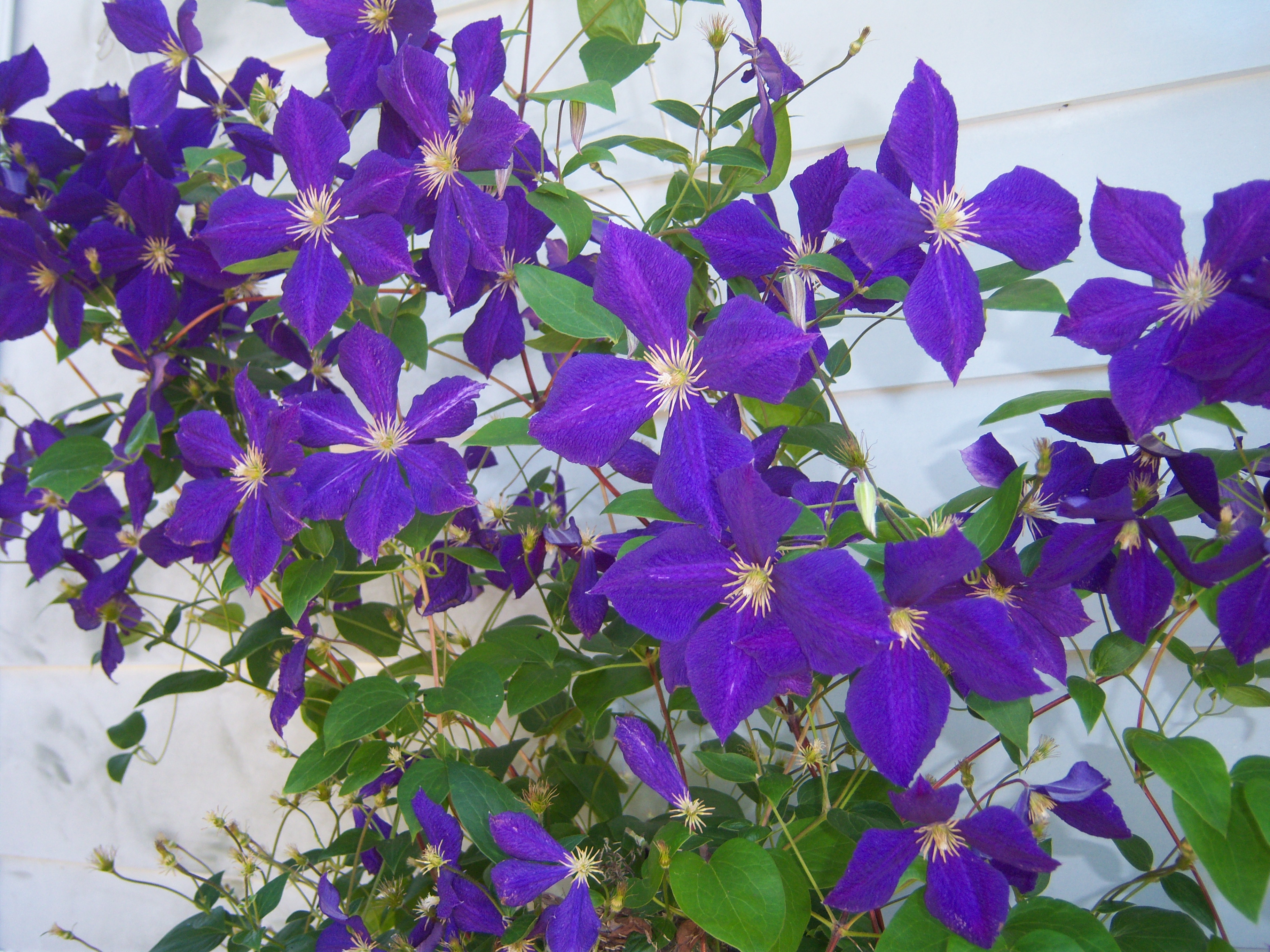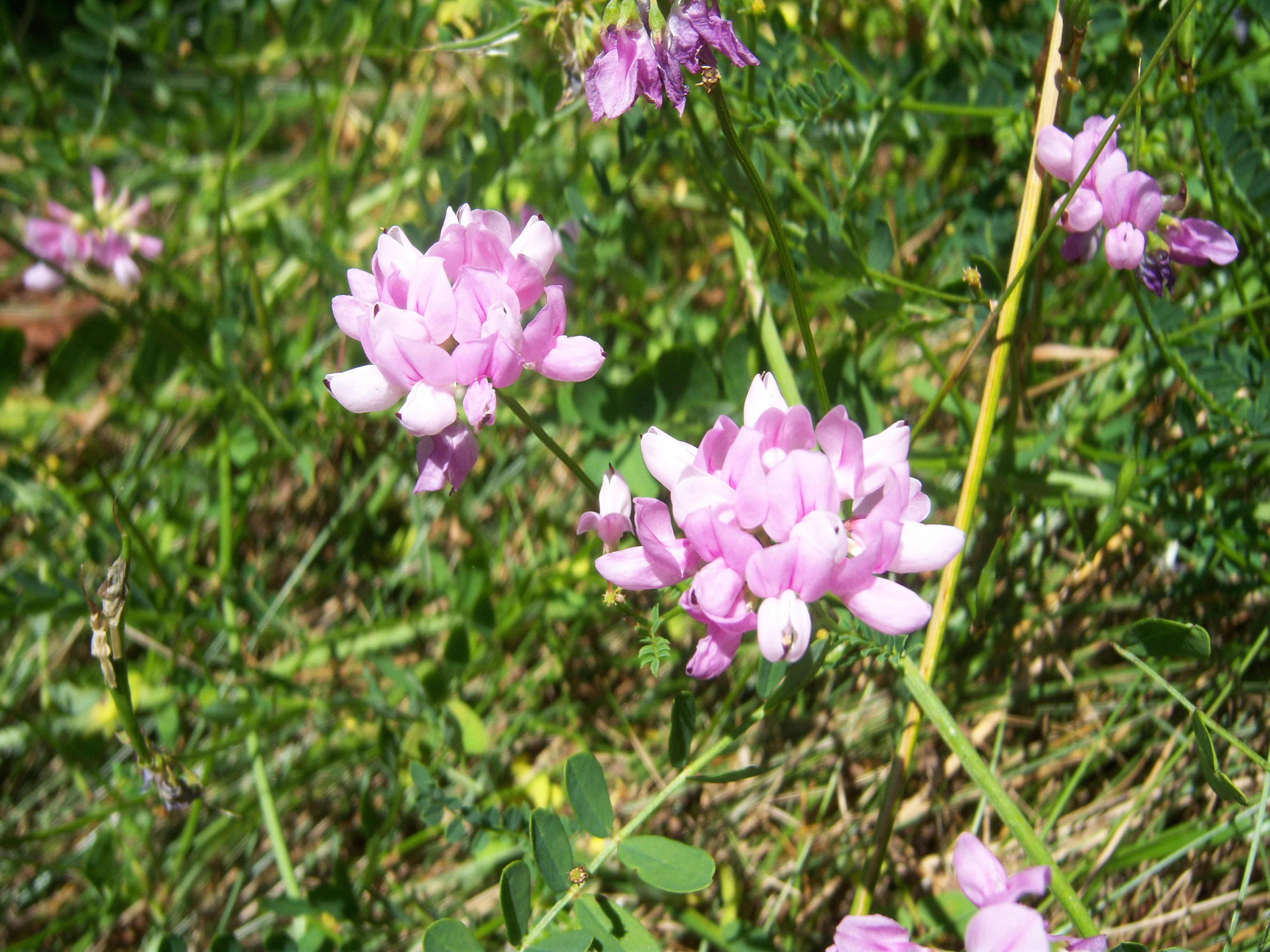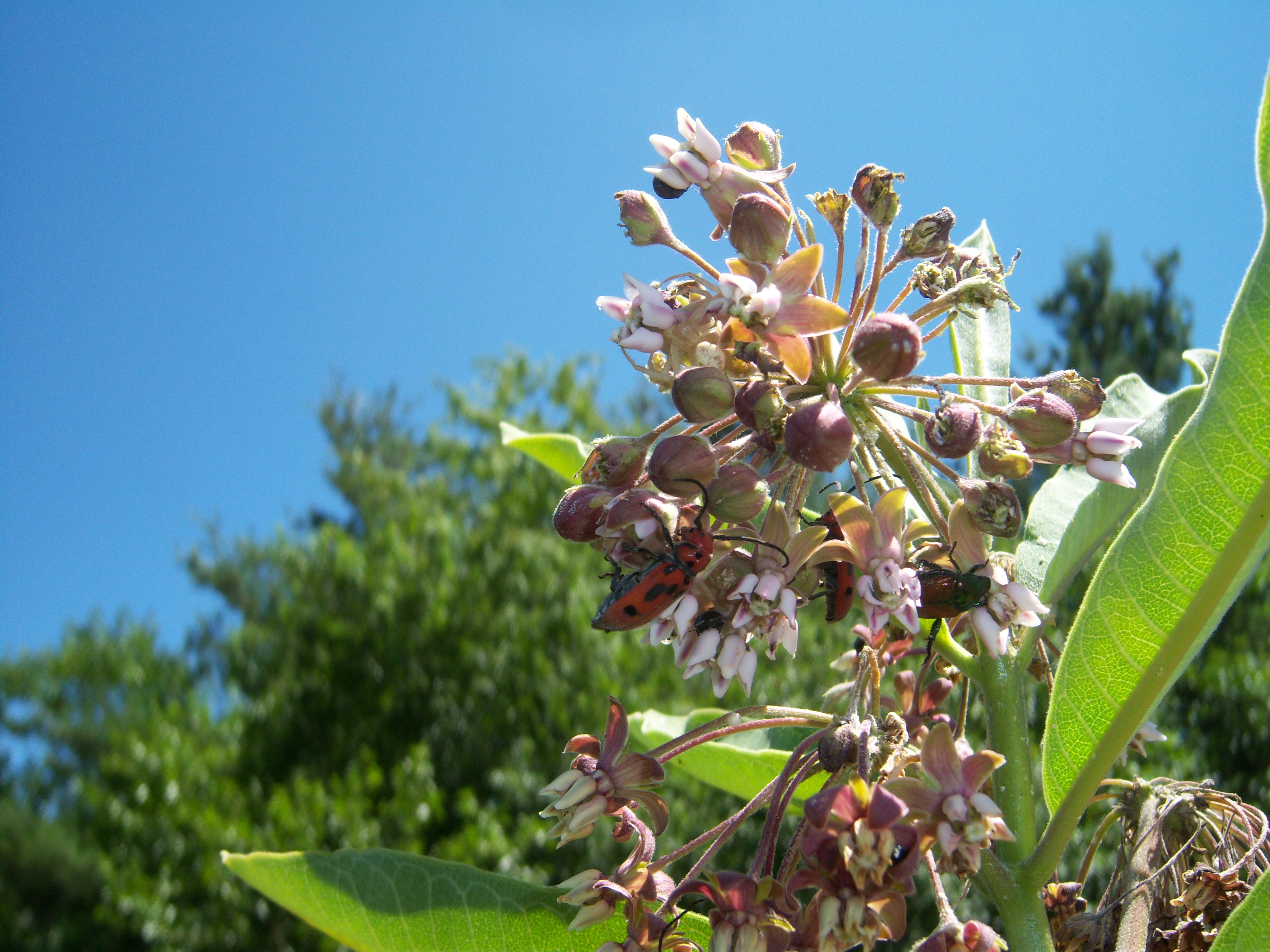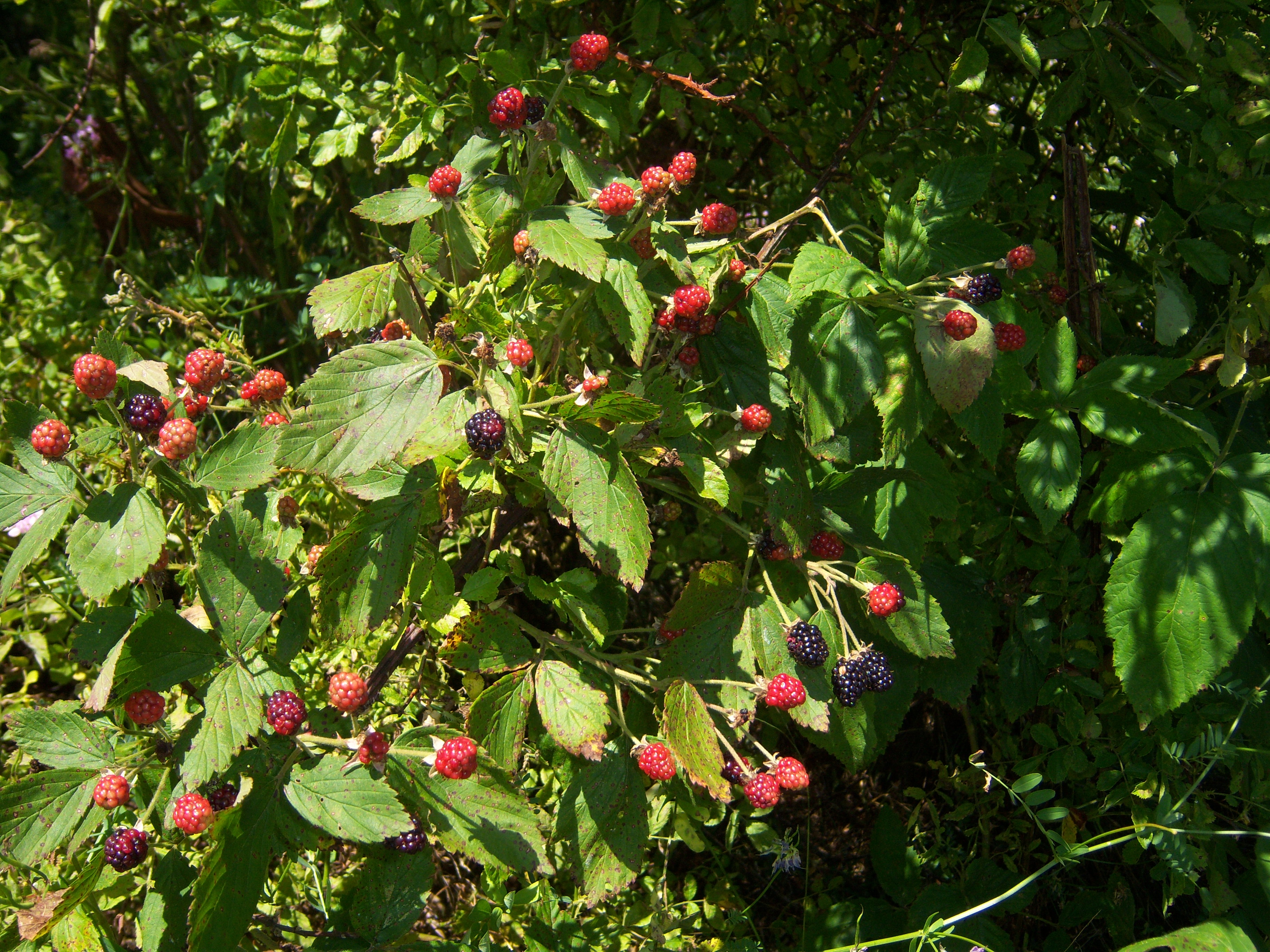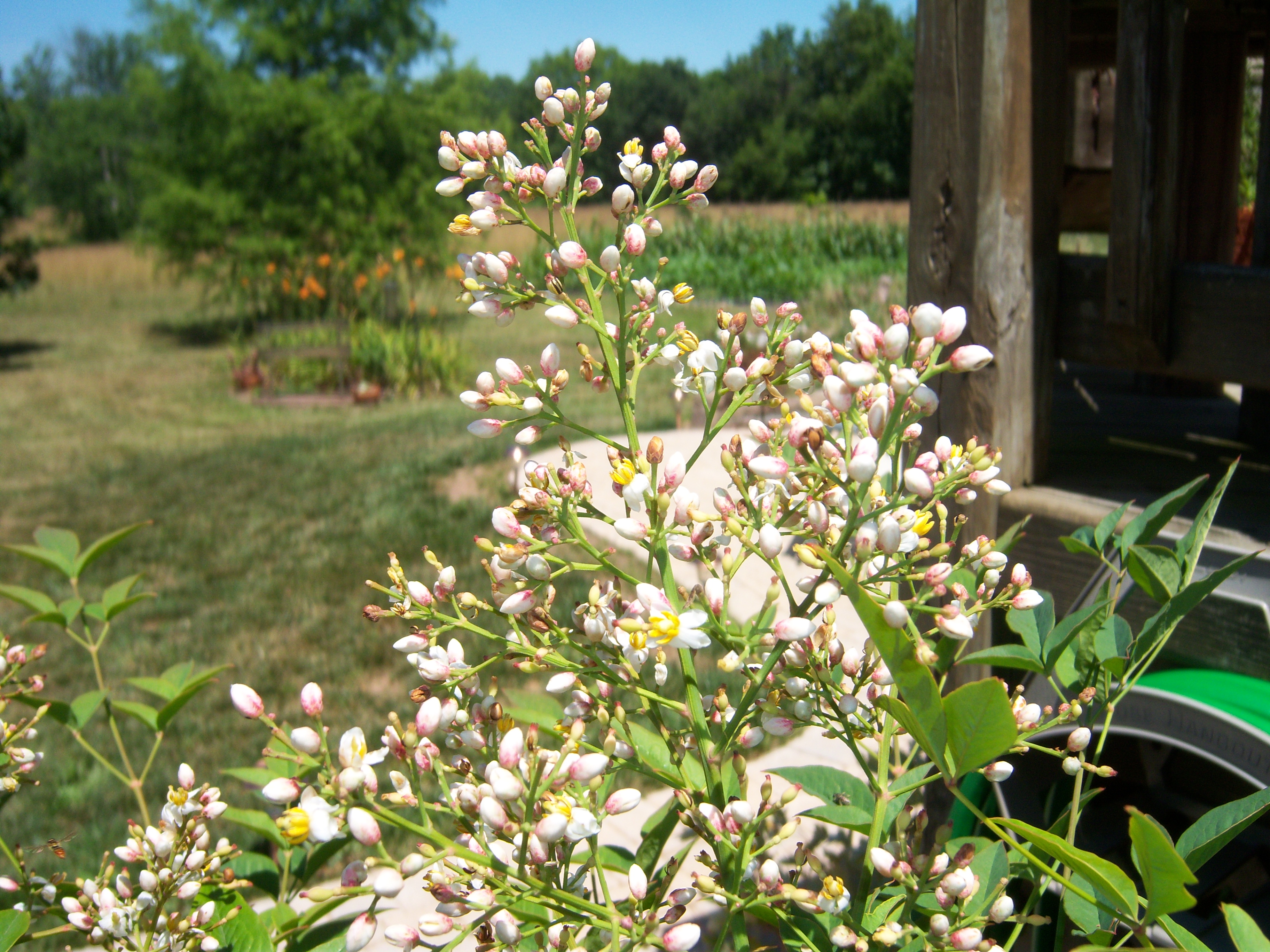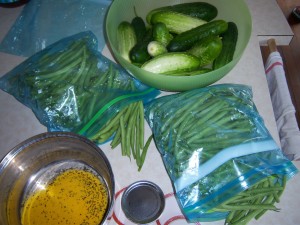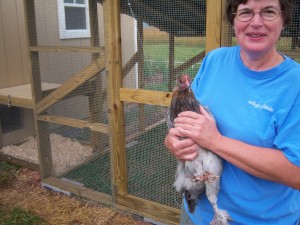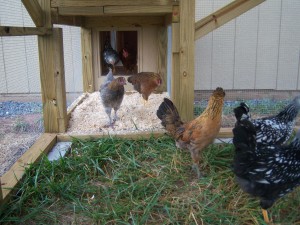
Pardoned Rooster
0Tarrick is one lucky little rooster. We were loading up the others to head over to our friends’ farm for the processing last evening and decided at the last minute to keep Tarrick a while longer and see how things worked out in the flock. He is such a little guy and wouldn’t really be worth the work of processing him. He is a little trouble maker, constantly worrying the guineas and some of the other chickens, but he has never shown aggression towards us – yet. I’m thinking that if we let him mix in the larger flock with the older rooster, Percy will help to keep him in line.
He is a beautiful bird and I don’t feel right about killing him just because he is a pain in the patooty! But he better behave himself or the next processing day that comes around may turn out differently!
Chicken processing day
0Tomorrow evening, “processing” 4 roosters is on the schedule. We say processing because it just sounds better than butchering, but the outcome is the same. We have both been struggling with this, just like we did last year when we had to cull 3 roosters. Maybe we just aren’t cut out to be real chicken farmers and actually eat some of our chickens. It is difficult not to remember the sweet little chicks that hopped up on our fingers and followed us around looking for treats. We have 7 roosters now and that is just not going to work out well as they get older. They are already picking on each other and the guineas quite a lot. We have our original rooster, Percy, and a Maran and a Rhode Island Red from this year’s chicks that we want to keep, and so the rest have to go. We could give them to someone else but most likely they would butcher them as well and who knows how they would be treated up until then. Roosters don’t really have much of a chance in this world. Most of the ones born in large hatcheries are killed right away because most people want only hens and who can blame them? Things are indeed much more peaceful in the chicken yard without a rooster trying to attack you. We do want to keep the 3 we have decided on in order to raise more chicks to keep adding new layers to our flocks, so there will be other roosters to “process” in the coming years. I try to make myself feel better by thinking that if these roosters had been born anywhere else they most likely would have been killed months ago, but it doesn’t really help much. I can’t look at them today; or maybe I should go look at them. Maybe I will just let them out of their yard so they can run away.

Garden varieties
0We are in the middle of a midsummer heat wave and the garden is struggling just a bit. The tomatoes are just starting because we planted them so late, but several other crops have come and gone. It seemed like a good time to make some notes for next year.
I didn’t like the Sugar Anne sugar peas we had this year. They had a very short window of edibility. They were quite small when we had to pick them, and if we missed one for a couple of days, it was too tough. I don’t remember what we planted last year, but they were better.
The Miragreen bush peas were pretty good. Peas are a lot of work, though for a relatively low yield, but so yummy, I think we will continue to plant them. We managed to freeze some this year with our new vacuum bagger. We are very hopeful that removing the air and sealing the bags will make a big difference in how long they last and how fresh they taste when we use them throughout the winter.
We just buy generic white, yellow and red onion sets, but the soil is key. We planted the red onions along the edge of the garden and they did very poorly. I am convinced that the soil isn’t as well conditioned at the edges. I will have to do a better job of conditioning next season. The problem we have had in the past is in the drying process. Most of the onions have rotted before we could use them in the past, but this year we have been more careful about the drying process. Basically, we knocked all the greens down after about 80% of them had already fallen, then we pulled them out of the ground about two weeks later and let them lay on the fabric between the rows for another week or two. Now they are still outside drying on our deck in partial shade. They have been there for another couple of weeks. Soon we will move them into the garage or basement where it will be cooler and drier still. After that I hope we can find a place to store them where they will last a long time without rotting. We will see how this goes in a few months.
The Early Contender bush beans were early developers and fairly long yielding, but very curvy and not as good for canning, whereas the Derby beans were long and straight and fairly high-yielding but for a shorter time.
The Annie Oakley okra has been amazing. We have had okra for at least the past three weeks and the plants are still going strong. the plants seem very bug and disease resistant. They are still beautiful and flowering every day. The Clemson okra plants are only just starting to produce fruit. They were planted a week or so after the first Annie Oakley and are much taller, but I can’t say much about the yield at this point. When the peas were pulled out, I planted another half row of Clemson. In retrospect I wish I had planted more Annie Oakley, but I think we were out of those seeds.
The Baby Thorogreen and Fordhook Limas which were planted at the same time are both doing well. The plants look strong and each have some three-inch pods, but we haven’t harvested any beans yet.
We haven’t picked any peppers yet as they were planted late like the tomatoes. As usual, we planted a variety like Serano, Hungarian Wax, and some bells that I can’t recall, but they seem slow to develop.
We planted one Asian eggplant variety which has thus far produced only two medium to small purple fruits. This was also planted at a corner of the garden which has probably handicapped the plant.
The Sugarbaby corn developed quickly, but not quick enough for the pests. This was our first ever attempt at corn and we only planted three 35-foot rows. The Stink bugs love corn we have discovered. There haven’t been so many Stink bugs in and around the house this summer (so far), but now we know where they all went. We were able to harvest and eat or freeze about a third of the ears, but the rest were too buggy. This was lucky for the chickens because they have gotten most of the rest of the Sugarbaby. They absolutely love the fresh corn. the Peaches and Cream corn is just now at the picking stage. It seems to be less buggy, but that might change in the next week or two. We are trying to pick and eat some every day. The ears are a bit smaller than the Sugarbaby, but still very tasty.

Chickens’ night out
0The weather has been so hot and dry and because I am such a procrastinator, the Gallus Palace yard has not yet been fenced. I dug five or six holes several weeks ago and even bought the posts and the cement, but the fence gnomes have been on vacation and the chickens refuse to do it themselves, so I guess I will have to get back on that project soon. In the meantime, we have decided that we can let the chickens out for a romp around bed time and they won’t wander too far off. If we time it right, they will run around, do a little flying/hopping, scratch and peck and chase each other around for a half hour and then return to their roosts for the night all by themselves.
We make this our happy hour: pull out some chairs, get a drink and maybe some chips and salsa and sit and watch the ‘chicken show’. This may be something only old fogies like us can relate to, but to help the younger generation relate, let me frame it another way. It’s like a real live screen saver on the biggest wide-screen TV you could imagine. The actors, the soundtrack, and the sunset are different every night and it’s entertaining and peaceful at the same time.
There are currently 15 birds in the palace: two roosters and 13 hens and all is still copacetic. The roosters are just beginning to crow and not bossing the hens around too much, and more importantly, not fighting with each other. Duran seems to be the boss, but that doesn’t seem to bother Big Red at all. We are still weeks away from getting eggs, but with six nest boxes we are surely ready when they start laying and even move some more hens into the palace.
Sweet corn feasting!
0We have been enjoying some really tender and yummy sweet corn. This is the first time that either of us has tried growing corn and so far we have had great results. We planted 2 varieties – Sugar Baby, which we are eating now, and Peaches and Cream, which should mature in another week or two. Both are bi-color varieties. The Sugar Baby plants are bigger and have produced some very nice sized ears. The Peaches and Cream plants are not nearly as robust, but I’m hoping the corn will taste just as good. We’ve read a lot about how many insect pests like sweet corn and we do see quite a lot of stinkbugs, and small black beetles on the plants, with just a small amount of damage inside the ears, but nothing we can’t live with. We just break off the buggy ends and give those to the chickens as treats – bugs AND sweet corn! This works out just fine for us and we don’t have to resort to covering the plants with chemicals. We are going to try freezing some whole cobs and just kernels in the next few days, but nothing beats walking out to the garden and picking just a few ears to have fresh for dinner – yummy!

Bees are doing well
0I looked in on the bees today. It was ideal weather – hot and sunny – and the bees were quite busy doing what they do. As usual, Joni was taking pictures for me and toward the end one bee was buzzing around her a bit too closely for her comfort and she started doing the bee dance – waving frantically and hopping around yelping. The end result was a minor sting. She never found a stinger and doesn’t remember actually feeling the sting, but after a few minutes found a spot on her arm where she was stung. Despite taking one for the team, she got some nice shots of the bi-weekly examination.
I have been trying to feed the bees every week, but only opening the inner cover to examine the frames every other week. I always seem to start with the B hive (Boston) which is the more developed hive and then when I get to the A hive (Anaheim) I am a bit disappointed. So next time, I want to remember to open Anaheim first.
Boston looked great. Lots of bees on the top of all the frames and all frames with at least some development. This was good progress since week six. The two outer frames still have lots of comb to go, but it got me wondering when or if I should put on another box. I need to read up on mid summer maintenance. Do keepers add boxes or supers this late in the season? Do I need to worry about a swarm?
Anaheim is behind, but only about two to four weeks. Hopefully both hives will be strong by the fall and will overwinter. I didn’t want to take the time to find the queens, as both hives looked like they were maintaining good brood frames. Also each hive still has a frame of honey although there were bees on them and they weren’t full. I suppose that the bees have been using some of the honey. I hope this is normal but I don’t really know.
Both feeder boxes were empty. This has been working nicely because when I fill them back up with my 1 : 1.5 sugar mix (1 cup of sugar to 1.5 cups of water), I flush out a few small hive beetles which I can then get rid of usually bysmashing them with my hive tool. I am assuming that just a few SHBs is normal and not something to worry about. I keep saying that I am going to make some traps, but I haven’t done it yet. I haven’t seen any sign of damage to comb or brood. Joni got a short video which I will post.
July color
0Despite being hot and dry, there are still things flowering and providing color around the property. I thought I would create a short slideshow of images to document the beauty. I will have to find out what my honeybees like so they will have some more choices during the hot summer months.

Time to make pickles and dilly beans
0Today is pickle day. Hopefully, there will be more pickling days, but we will have to see how the pickle vines – some might call them cucumbers – do in the next few weeks. Like everything in the garden, there is a long build-up to seeing fruit and then a relatively short harvest. It seems like forever – planting and weeding and watering and watching – and then shortly after you see a few blossoms, the fruit is there. Then shortly after that, it’s gone. Tomatoes and peppers are a bit of an exception. They take longer from blossoms to mature fruit and the season last a good while. But the radishes, spinach, lettuce, peas, beans, and cucumbers explode with fruit and then it’s over.
Now that the cucumbers are here, we will do some canning. The beans are slowing down, but we have saved a few pounds of them to can with the pickles. We will use the same pickling juice for the beans. I love dilly beans. Not sure where or when I had my first ones, but I am looking forward to making these again this year. The Derby bush beans have yielded beautiful long straight beans that will be ideal for putting in jars. And this year’s pickles are clearly better than what we got last year already, so these should be good, too.
Last summer was hot and unusually dry. The lawn lost almost all of its green color and actually died in large patches. We kept the garden barely alive by watering with the soaker hose, but the weather clearly made this a struggle. So far this year has been a little better, but still a bit dry for the past month or so. We planted the squash and cucumbers in between the tomato plants and so far this has working out pretty well although it is a bit tricky finding a place to step.
We planted two varieties of cucumbers: Sassy Hybrid and Miss Pickler “Pioneer”. I’m not sure at this point which is which, but everything we have picked so far looks great.

Chicks move into Gallus Palace
0Fifteen of the new chickens who are about 12 weeks old now moved into the new coop – Gallus Palace – yesterday. It was a s big a day for us as it was for the chickens. It feels like we have been building the Palace since the Eisenhower administration and it was a momentous occasion. We carried the birds over one or two at a time and although we were happy about it the chickens were not so sure. Being creatures of habit, they were initially frozen in their new surroundings. We set up food and water and after a few minutes they started to walk around and explore their new home.
We moved 13 hens and only two of the six roosters. We will be keeping Big Red and Duran for breeding. We left the three Partridge Rock roosters and the Egyptian Fayoumi in the nursery coop where we added the six guineas. This was the driving force as of late behind the effort to finish the Palace. The guineas have been living in the basement in a smallish box about 2 ft by 5 ft. They were clearly outgrowing that space and they were really beginning to stink up the basement. guineas are excellent fliers, unlike chickens, so we wanted them to go inside of the nursery coop with the roosters outside for a few days until they could get better acquainted. Last night after dark, we put the roosters into the nursery coop and come morning they all seemed to be resigned to these living quarters. We will keep the guineas inside the coop for another day or two so they get used to roosting in the coop. The main coop and nursery coop are both covered, so the guineas can’t fly away, but they will be virtually impossible to catch and we are hoping that they will learn to go into the coop at night.
Eventually, we will move the guineas into the Palace and the soon to be fenced chicken yard will not be covered and the guineas will be free to roam the countryside. It is our hope that they will hang around for the free food and lodging, but there is no guarantee. We have read stories of whole flocks of Guineas just wandering or flying off and never returning 
You can review the entire project through the Picasa photo gallery (139 pictures).
Bee patient
0The honeybees seem healthy, but whatever it is that they are suppose to be doing, they are doing it slowly. I keep waiting for my blank frames to fill up with brood and honey, but it is just not happening. Hive A (I think I will call it Anaheim) has always been a lot less active than hive B (let’s call it Boston). They both came as nucleus hives (nucs) from the same beekeeper, so I don’t know why one would be so different from the other. I have read that others have observed the same thing. Nobody seems to know why. After two or three weeks I began to notice that Anaheim had its moments. Around midday or early afternoon on some days, Anaheim seemed a little busier than Boston.
Last weekend when I looked into the hive for only the second time, I found that Boston had filled about one and a half sides of a new frame, but there was very little development anywhere else. Anaheim has only a little comb starting on one new frame.
My nucs came as five frames: one full frame of honey, two frames of mostly empty comb and two frames of brood and bees. I don’t know how many bees I got, but my guess is about a pound or even less which might be about 3,000 bees. Of course, there is also brood in many stages which means that new bees are in the pipeline. The other main option for starting a hive is to get a package of adult bees usually either three or four pounds which means in the 10,000 to 15,000 bee range. But these installations have no brood and the queen has to acclimate herself to her new home and start laying eggs which take around three weeks to hatch.
I assumed that my small village of two or three thousand bees would soon be 10,000 and the queen would quickly fill up the drawn comb with more brood and start drawing comb on my five brand new frames that fill out the 10-frame hive box.
I’m sure I was being a bit impatient, but now after a month, I feel like I might have doubled the population in each hive, but still not made much progress toward filling up the hive boxes.
I hadn’t thought too much about the timing, but apparently the biggest growth spurt of the year comes in the early spring, perhaps mid March through mid May here in Maryland. That is when there is lots of flowering going on and most of the bee populations grow to swarming proportions. I got my bees right after that population explosion (which makes sense if you are selling nucs) and now hive development is much slower.
There is still lots of stuff I still don’t understand. Like if the nectar flow has slowed way down in June and July, why is it that the honey harvest is in July or August? I won’t get any honey this year. I knew that from the outset, but I am already worried that my hives won’t have enough bees or honey to make it through the winter. Patience. The bees are smarter than I am at this and they probably have it all under control.
I continue to feed them. They have never stopped taking my sugar water, so I will continue to make it for them. I am currently using a concentration of about 1 cup of sugar to 1.5 cups of water. Hopefully there is a little burst of nectar and pollen in late August and September and this may be when they are starting to store up honey for the winter.
